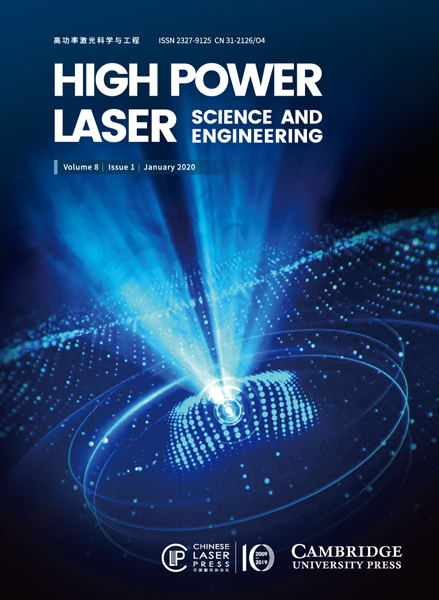2016, 4(4) Column
High Power Laser Science and Engineering 第4卷 第4期
 Download:752次
Download:752次Measured highly elevated gains of proton–boron (HB11) fusion (Picciotto et al., Phys. Rev. X 4, 031030 (2014)) confirmed the exceptional avalanche reaction process (Lalousis et al., Laser Part. Beams 32, 409 (2014); Hora et al., Laser Part. Beams 33, 607 (2015)) for the combination of the non-thermal block ignition using ultrahigh intensity laser pulses of picoseconds duration. The ultrahigh acceleration above 1020 cm s??2 for plasma blocks was theoretically and numerically predicted since 1978 (Hora, Physics of Laser Driven Plasmas (Wiley, 1981), pp. 178 and 179) and measured (Sauerbrey, Phys. Plasmas 3, 4712 (1996)) in exact agreement (Hora et al., Phys. Plasmas 14, 072701 (2007)) when the dominating force was overcoming thermal processes. This is based on Maxwell’s stress tensor by the dielectric properties of plasma leading to the nonlinear (ponderomotive) force fNL resulting in ultra-fast expanding plasma blocks by a dielectric explosion. Combining this with measured ultrahigh magnetic fields and the avalanche process opens an option for an environmentally absolute clean and economic boron fusion power reactor. This is supported also by other experiments with very high HB11 reactions under different conditions (Labaune et al., Nature Commun. 4, 2506 (2013)).
 Download:829次
Download:829次 Download:889次
Download:889次 Download:783次
Download:783次 Download:825次
Download:825次 Download:1003次
Download:1003次动态信息
激光评论微信公众号

点击菜单“联系编辑”即可添加期刊编辑为好友啦
















